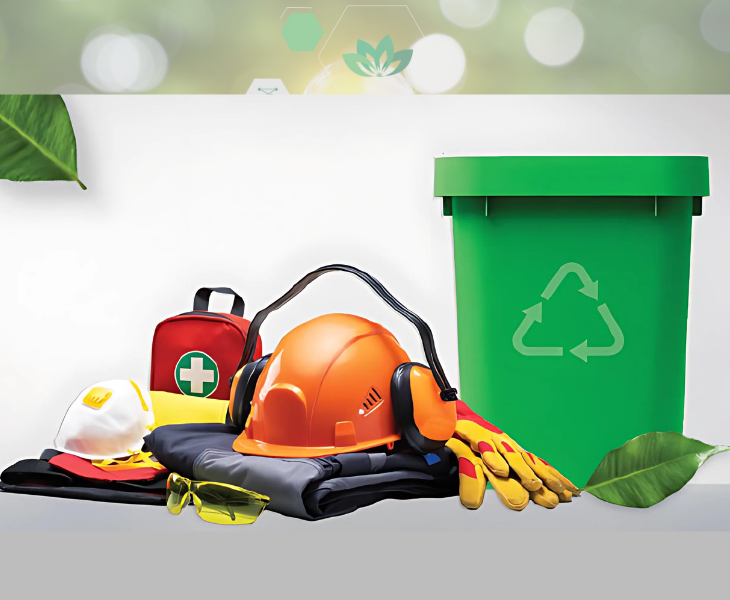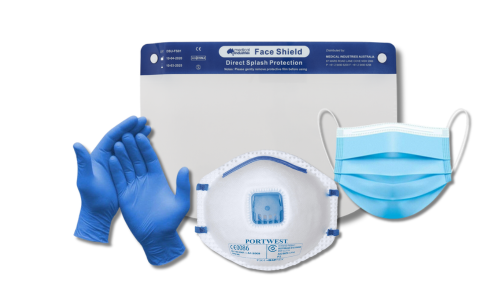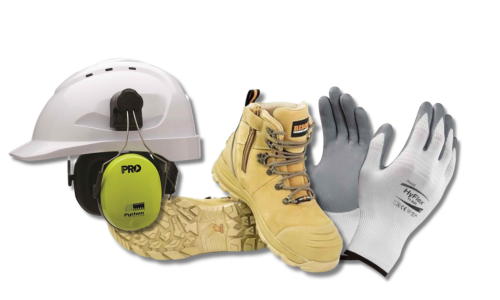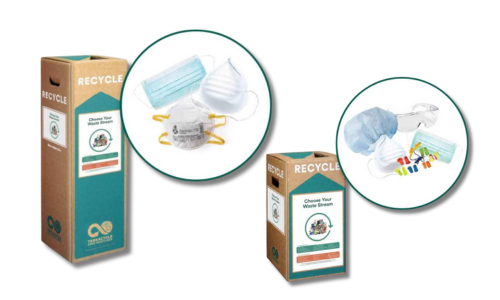Athough no hard data exists for Australia at this time, a 2021 British study of the environmental impact of PPE for health
and social care workers in the first six months of the COVID pandemic paint a stark picture. The carbon footprint of the PPE distributed in those six months in 2020 amounted to approximately 106,478 tonnes of CO2.
The disposal of personal protective equipment (PPE) in Australia has become a significant environmental concern, especially since the onset of the COVID-19 pandemic. Every year, a considerable amount of PPE waste is generated.
During the 2020-2021 period, Australia produced an estimated 75.8 million tonnes of waste, a portion of which includes discarded PPE. Despite efforts to improve waste management and recycling, PPE contributes significantly to the growing volume of waste sent to landfills.
With Australia’s recycling rate for plastics, including PPE, standing at just 13%, most of this waste ends up in landfills, worsening environmental challenges. As PPE use continues, addressing the environmental impact of its disposal is critical.
What Constitutes PPE
PPE comes in many forms, as different industries have different hazards that people need to be protected from.
Medical PPE
The focus of the study mentioned above is focused on PPE used primarily in a medical setting, such as:
- Gloves: Used to protect hands from exposure to bodily fluids and infectious agents.
- Face Masks and Respirators: Surgical masks and N95 respirators protect the nose and mouth from airborne particles and droplets.
- Gowns and Aprons: Worn to protect the body and clothing from contamination.
- Face Shields and Goggles: Protect the eyes from splashes and sprays of infectious materials.
- Shoe Covers: Worn over shoes to prevent contamination of footwear in sterile environments.
- Caps and Hair Covers: Protect against contamination in environments like operating rooms.
Industrial PPE
Industrial PPE is designed to protect workers from hazards in industrial settings. Examples include:
- Hard Hats: Protect the head from falling objects and impacts.
- Safety Glasses and Goggles: Shield the eyes from debris, chemical splashes, and other hazards.
- Earplugs and Earmuffs: Protect hearing from loud noises in environments like construction sites or manufacturing plants.
- High-Visibility Clothing: Enhances worker visibility in low-light or high-traffic areas.
- Safety Boots and Shoes: Provide foot protection against punctures, slips, and heavy objects.
- Respirators: Protect against inhalation of harmful dust, fumes, and chemicals.
- Gloves: Many industries require distinct levels of hand protection.
The Problem with PPE Disposal
Despite how common PPE is, disposing of PPE sustainably is challenging for several reasons:
- Material Composition: Many PPE items, like masks, gloves, and gowns, are made from non-biodegradable synthetic materials, such as plastics and composites. These materials are durable and difficult to break down in landfills.
- Contamination: PPE used in industrial or medical settings often encounters hazardous substances, including chemicals, biological contaminants, or infectious agents. This contamination makes it unsafe to recycle or reuse these items without specialised treatment processes.
- Recycling Complexity: The mixed-material construction of PPE, such as respirators that combine plastic, metal, and fabric, or Hi-Vis clothing that combine fabric and plastics complicates recycling. Each material type needs to be separated, a process not always workable on a large scale.
- Lack of Infrastructure: Many regions lack the infrastructure to properly collect, process, and recycle PPE. Without adequate facilities, most PPE ends up in landfills or incinerators, contributing to environmental pollution.
What Can We Do?
PPE is a necessity for many, if not most industries, but even with the difficulties of disposing of PPE, there are still things an organisation can do to limit their PPE carbon footprint.
Eco-Friendly Options
Masks, gloves, and some other forms of medical grade PPE typically don’t have eco-friendly options due to the need for specific materials to meet exacting standards, but that isn’t the case for all PPE.
Uniform and Hi-Vis clothing manufacturer Portwest offers a range of HiVis polos, long sleeves and jackets made from recycled PET bottles and feature 100% recycled polyester. Each garment guaranteed a set number of PET bottles have been recycled in creating it, with 11 PET bottles recycled to make polos, 14 PET bottled for long sleeves, and a whopping 36 PET bottles recycled to make each fleece jacket.
By opting for eco-friendly high visibility gear, organisations can ensure that their workers are safe and visible in all conditions, while still limiting their carbon footprint.
Specialised Recycling Services
While recycling PPE can be very difficult due to the materials involved or the materials potentially being contaminated, it is not impossible. Specialised recycling solutions for PPE are available across Australia.
TerraCycle PPE Recycling Boxes offer an innovative solution for the sustainable disposal of personal protective equipment such as masks, gloves, and face shields. These boxes are designed to collect used PPE items, which are then sent to TerraCycle recycling facilities for processing. The collected PPE is sanitised to remove contaminants and recycled into raw materials that can be used to manufacture new products, reducing the environmental impact of PPE waste.
By utilising specialised PPE recycling programs such as those offered by TerraCycle, organisations can show a commitment to sustainability while addressing the growing challenge of PPE waste disposal.





